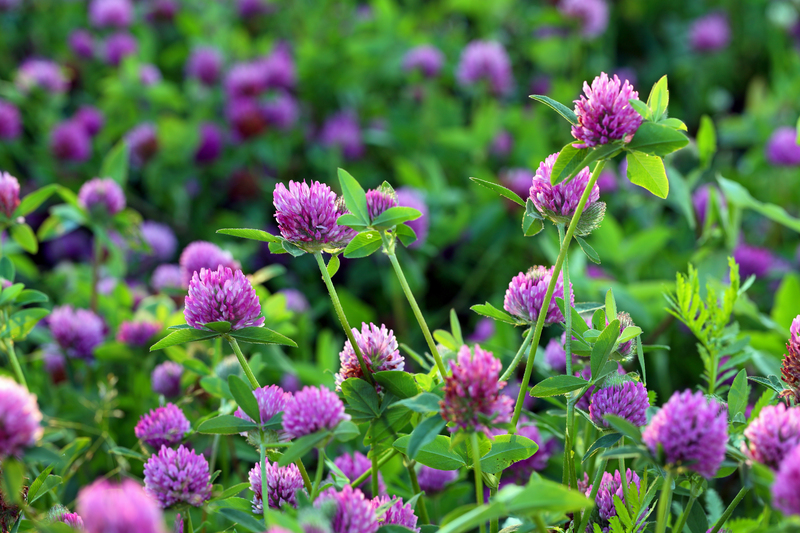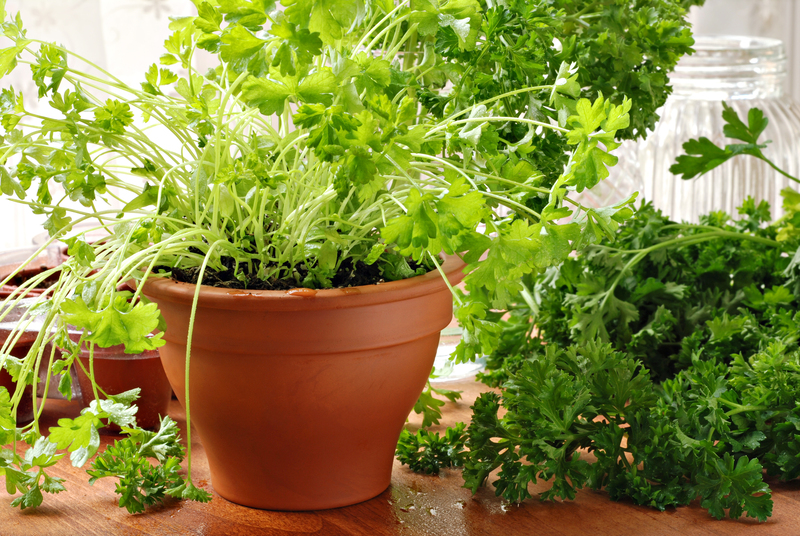Reclaim Your Garden with 3 Tactical Weed Control Tips
Posted on 28/05/2025
Reclaim Your Garden with 3 Tactical Weed Control Tips
Weeds--the bane of every gardener's existence. They seem to appear overnight and quickly take over, robbing your plants of nutrients, sunlight, and moisture. Whether you're a seasoned gardener or just starting, effective weed control is essential to maintaining a beautiful, thriving garden. In this comprehensive guide, you'll discover the three most effective tactical weed control strategies to reclaim your garden and keep it flourishing all year round.
Why Is Weed Control Critical in the Garden?
Weeds can inflict serious damage to your garden by:
- Competing with your beloved plants for water, nutrients, and sunlight
- Attracting pests and plant diseases
- Making your garden look untidy and neglected
- Reducing crop yield in vegetable gardens
- Spreading rapidly, making future control much harder

Top 3 Tactical Weed Control Tips for a Thriving Garden
1. Start Strong: Cultivate Healthy Soil and Mulch Wisely
A healthy, well-prepared garden soil is your first line of defense against invasive species. Weeds thrive in depleted, compacted, or disturbed soils. Therefore, investing time in building robust soil can make all the difference.
- Enrich Your Soil: Regularly add compost and organic matter. Healthy soil supports strong plant growth that outcompetes weeds.
- Avoid Disturbance: Over-tilling brings dormant weed seeds to the surface where they can germinate. Use a hand fork or minimal tillage whenever possible.
Perhaps the most effective weed control method is mulching. A thick layer of mulch (2-4 inches) acts as a physical barrier, blocking sunlight and making it difficult for weed seeds to sprout. Organic mulches--such as wood chips, shredded leaves, grass clippings, or straw--also nourish your soil as they decompose, creating a win-win situation.
- Apply Mulch Generously: Lay down mulch soon after planting and top up regularly, especially after heavy rain or as organic mulch breaks down.
- Target Problem Areas: Pay special attention to bare patches, which are open invitations for weed seeds.
- Choose the Right Type: For perennial beds, use bark or wood chips. For vegetable patches, straw or compost works well.
Pro Tip: Never pile mulch against plant stems, as this can trap moisture and cause rot. Keep a gap of an inch or two around each plant.
2. Remove Weeds Early and Often--Timing Is Everything
Manual removal is the tried-and-true approach in your battle against weeds. The earlier you catch them, the easier they are to control and the less likely they are to spread or seed.
- Weed When Wet: Pull weeds after a rainfall or after watering. Moist soil makes it easier to extract the whole root--and removing the root is critical for most stubborn weeds.
- Consistent Action: Short, frequent weeding sessions (10-15 minutes a day) are more effective--and less overwhelming--than waiting for weeds to take over.
- Use the Right Tools: A sharp hoe, hand fork, or dandelion weeder can make weed removal quick and thorough. Prioritize tools that get beneath the surface!
- Dispose Properly: If weeds have set seeds, don't compost them. Bag and remove them, or destroy them in a hot compost heap.
Never let weeds go to seed! A single dandelion can produce over 2,000 seeds. If you see flowers or seed heads, remove them immediately. Staying vigilant greatly reduces next year's weed problems.
3. Take the Offensive: Preventative Planting and Barriers
Don't just fight weeds--prevent them! Strategic planting and physical barriers can choke out unwanted guests and minimize opportunities for them to invade.
- Dense Planting: Close plant spacing naturally shades the soil, leaving less room for weeds to establish. Consider ground covers and companion planting for natural weed suppression.
- Landscape Fabric: In high-traffic areas or under perennial shrubs, lay landscape fabric topped with mulch. This combination creates formidable, long-lasting weed barriers.
- Edge Management: Weeds love to creep in along garden edges. Use physical edging materials--such as brick, metal, or recycled plastic--to block encroachment from lawns or wild spaces.
- Cover Crops: For vegetable gardens, planting cover crops between seasons shades out weeds, adds organic matter, and prevents erosion.
For particularly tough perennial weeds, such as bindweed or quackgrass, you may need to resort to smothering: lay down thick cardboard or several layers of newspaper, wet thoroughly, then cover with mulch or soil. Over a season, this blocks sunlight and kills even persistent roots beneath.
Bonus Tips for Long-Term Weed Control Success
- Inspect New Plants: Always check nursery plants' pots for hitchhiking weeds before planting.
- Water Smart: Use drip irrigation or soaker hoses to direct water to your plants' roots, not weed seeds blanketing the surface.
- Stay on Schedule: Early spring and late fall are key times for weed prevention--tackle them before they germinate in spring and before they set seed in autumn.
- Consider Non-Toxic Solutions: Vinegar sprays or boiling water can help control small outbreaks in cracks or paths, but take care not to harm desirable plants.
How Often Should You Weed Your Garden?
The best weed management strategies are those practiced routinely. Aim to check your garden every week--more frequently during wet, warm periods, when weed growth is rapid. Remember, the goal is routine maintenance, not massive weeding marathons. Developing good habits pays off with less work over time and a much healthier landscape.
Common Types of Garden Weeds: Know Your Enemy
Identifying the types of weeds in your garden helps you choose the best weed control solutions:
- Annual Weeds: These grow, seed, and die in one season. Examples: chickweed, crabgrass, lamb's quarters.
- Perennial Weeds: These return year after year from roots or runners. Examples: dandelion, bindweed, quackgrass.
- Biennial Weeds: These live for two years. Examples: bull thistle, mullein.
Focus urgent efforts on the most aggressive or invasive types, especially perennials, which can be hardest to eliminate once established.
Eco-Friendly Weed Control: Sustainable Solutions for Your Garden
Many gardeners prefer to avoid chemical herbicides, opting for methods that protect ecological health and pollinators. Here are some eco-friendly weed suppression options:
- Hand Pulling & Hoes: Safe and effective for most areas.
- Organic Mulch: Protects soil and prevents weed germination.
- Flame Weeders: Use with caution in gravel or non-flammable areas.
- Boiling Water: Instant weed kill--great for driveways or paved areas.
Remember: Persistence is key. Eco-friendly approaches may require more frequent attention but provide lasting benefits for your entire garden ecosystem.
Frequently Asked Questions About Weed Control
- Are all weeds bad for my garden?
Not always. Some "weeds" like clover and borage can help fix nitrogen or attract beneficial insects. However, most weeds compete with your chosen plants for vital resources. - How can I prevent weeds without chemicals?
Use a combination of dense planting, mulch, hand weeding, and barriers to naturally suppress unwanted growth. - When should I start weed prevention?
Start before you see weeds! Prepare soil, mulch, and plant densely from the earliest stages of your garden.

Conclusion: Take Back Your Garden--Starting Today
Unwanted weeds don't have to control your cherished garden. With these three tactical weed control strategies--healthy soil and wise mulching, timely removal, and strategic prevention--you can reclaim your space and keep it lush and productive. Adopt a consistent routine using these proven methods, and soon, unwanted growth will become a distant memory, letting your garden's beauty truly shine.
Remember: Persistence is your greatest ally. Combine proactive measures and regular attention for a landscape you're proud of, season after season.
Key Takeaways: Tactical Steps for Long-Term Weed Control
- Mulch and maintain healthy soil to stop weed seeds from germinating
- Weed regularly--especially after rain and before weeds go to seed
- Use dense planting, ground covers, and physical barriers for lasting protection
*Ready to reclaim your garden with effective weed control? Put these tips into action and enjoy a lush, weed-free sanctuary all season long!*

